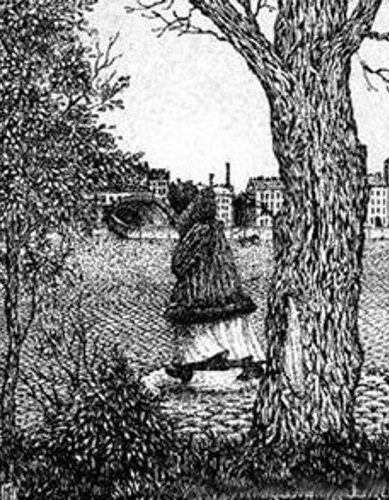Imaginary Treasure of Rennes-les-Bains
Paul Smith
16 August 2023
Believers in treasure are willing to imbue anything with profound significance, however small, that points to a “treasure”. Remember that the existence of the Rennes-les-Bains and Rennes-le-Château treasure does not exist on the “surface” but it needs to be overlaid over miscellaneous accounts that have got nothing remarkable about them. It should be repeated [again] that complaints against Abbé Bérenger Saunière trafficking in masses were first brought to light in about 1896 – and that the church altar of 1886 was a donation from a rich widow – and the amount paid for the stained-glass windows costing 1,350 francs were paid in instalments, the last of which was paid in January 1900.
Antoine Delmas (circa 1672-1742) was the local priest of Rennes-les-Bains, who wrote an inventory of Roman artefacts (the Delmas Manuscript of 1709). Nothing special here. We should be extremely surprised if no Roman artefacts were found in either Rennes-les-Bains or Rennes-le-Château since this area of France was occupied by the Roman Empire.
The testament of Francois Pierre d'Hautpoul is registered by the notary of Esperaza, Captier. Since we do not have any details of its contents, this is another example of potential juicy mythomania for conspiracy theorists to elaborate upon.
Blaise Hautpoul, son of Francois, has the church at Rennes-le-Château restored and in this endeavour is helped by Nicolas Pavillon, Bishop of Alet. There is nothing special about this. Priests the world over were having their churches restored by the nobility and/or by wealthy patrons.
Blaise Hautpoul goes to court against Nicolas Pavillon, bishop of Alet, to prevent King Louis XIV troops searching and trampling over his lands and mines at Rennes-les-Bains. Blaise's lands and possessions include Rennes-le-Château, St Just, Le Bezu, Rennes-les-Bains, Montferrand, Montazels and La Val Dieu. This long and complex trial will end in Grenoble in April 1666 to the advantage of Nicolas Pavillon, but only after the King breaks the judgments in favour of the bishop. Seriously, this is nothing special about that – since squabbles and fights between monarchs and the landed gentry existed all over the world…
Colbert, the treasurer of Louis XIV, creates a mining company to prospect on the land of the Hautpouls. He finds exhausted mines. (As did Dubosc, Catel.)
Louis XIV buys Poussin's Shepherds of Arcadia from one C. A. Herault. However, the painting does not depict the area around Les Pontils. The tomb at Les Pontils was that of Louis Lawrence whose remains, as well as other members of his family, were transferred to another cemetery. The tomb at Les Pontils was destroyed in 1988 by the then owner because he was fed-up of treasure hunters.
Auguste de Labouïsse-Rochefort publishes his book Voyage à Rennes-les-Bains in 1832, but possibly first written in 1803 – and mentions “The Legend of the Devil’s Treasure”. Note the word “Legend” and the reference to “but as the millions were imaginary”. The story reflects the fate of his father-in-law who almost lost his fortune but managed to save a little of it.
Stephanie Buttegeg is not a “historian” but a Tourist Guide! She would have vested interests in keeping the myth of the treasure going! Of course she would argue for the existence of a “dark secret”.
The Temple Rond was a Plantard fantasy.
Noël Corbu invented the story of Ignace Paris. Furthermore, it has been pin-pointed how this legend originated. Just like Robert Charroux's statement concerning “the treasury of France”. The sources of these stories are banal and certainly unhistorical.
“So we have several legends concerning the Hautpoul family” – and a very long time before 1896 and Bérenger Saunière! And nothing special!
Dame Anne Delsol died in 1705: surely she was not the only person buried in the crypt of the church of Rennes-le-Château! It was very common for all churches to have burial crypts – this is another unremarkable fact!
And so on, and so on, and so on, including citing passages from the unremarkable book by Docteur Jean Gourdon, Stations Thermales de l'Aude: Rennes-les-Bains, Campagne, Alet (1874).
The one thing that can be concluded from this is that the mythomaniacs (calling themselves “researchers”) engage in monumental inferences that “treasure” exists everywhere (no matter how small) – and that involves writing about ten thousand words of diffuse nonsense – indeed, you need to wear hobnail boots to wade through it all. Not only that, it's more than enough to put anybody off the subject matter of Rennes-les-Bains and Rennes-le-Château! No mainstream sober archaeologist would find any of this to be of any interest. Indeed, the whole subject matter has been dismissed as pseudo-historical gibberish.

|
